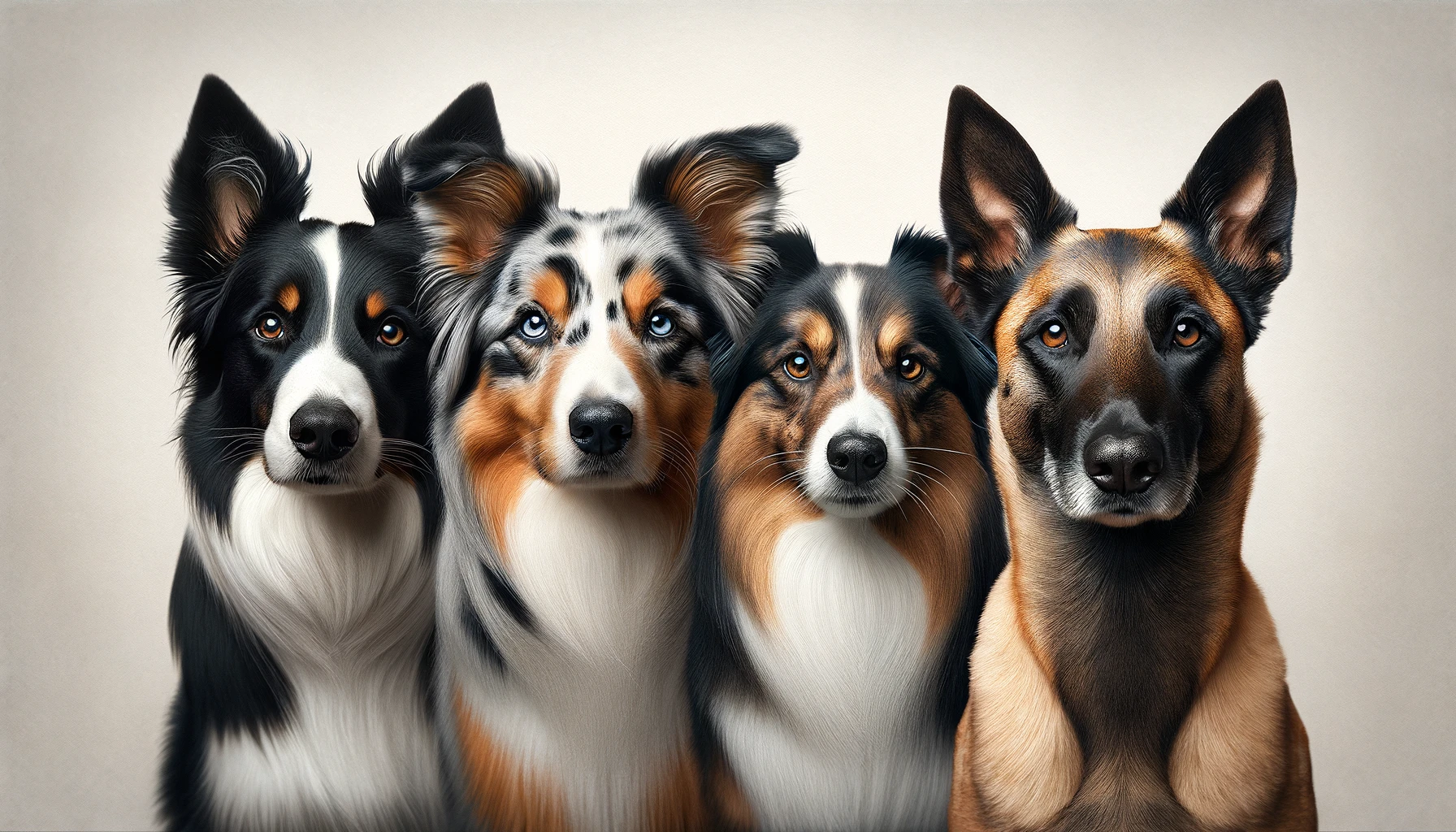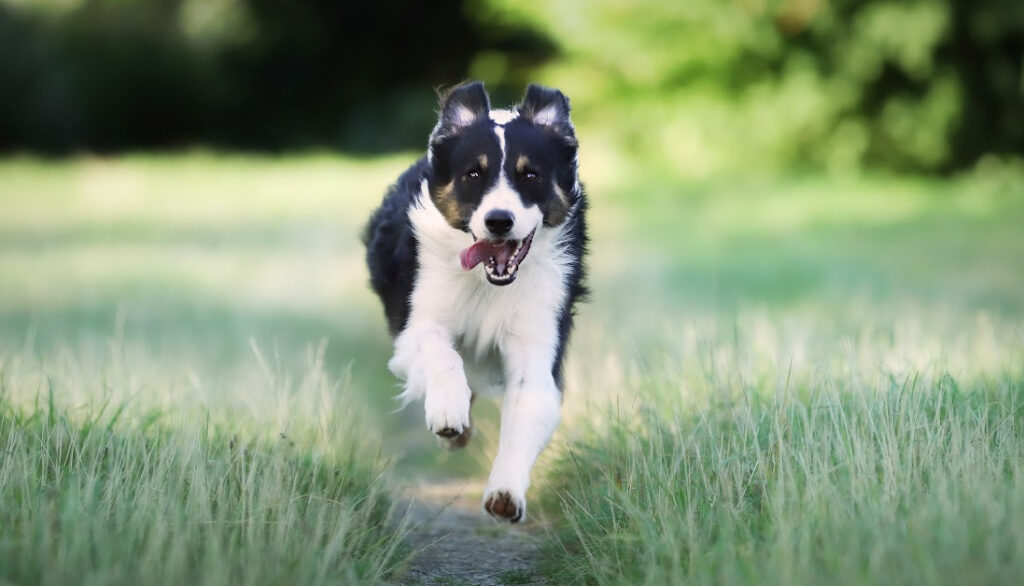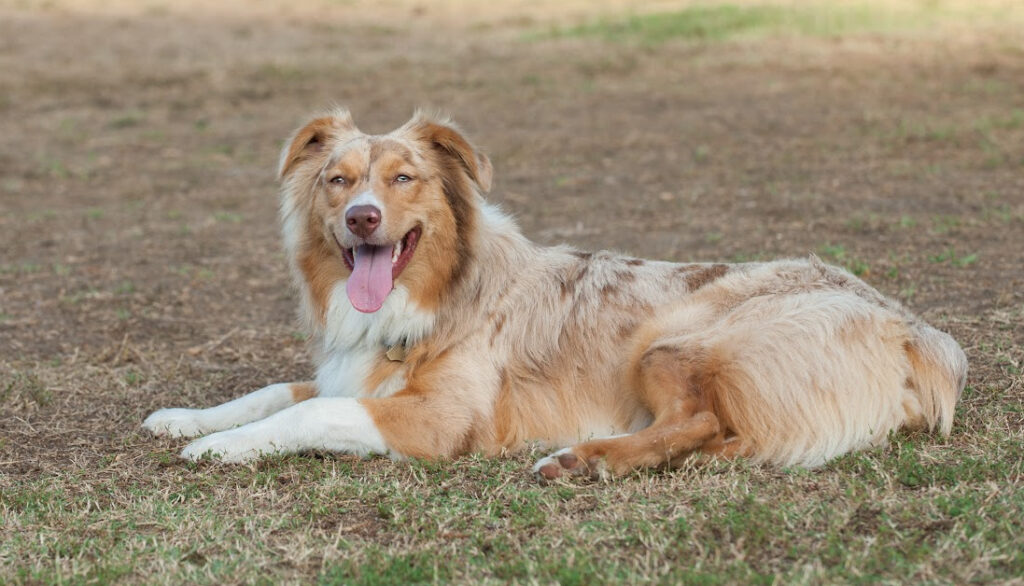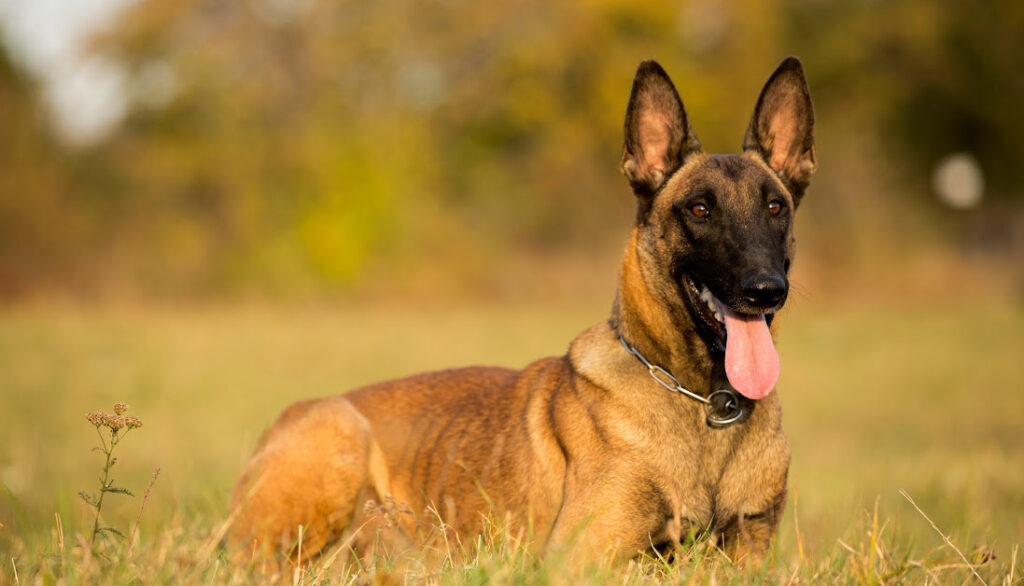If you’re someone who loves to stay active, whether it’s running, hiking, or participating in competitive sports, have you ever considered finding a four-legged companion to join you on your adventures? Athletic dog breeds are ideal for those with a high-energy lifestyle, bringing a unique blend of companionship, joy, and motivation to your active routine. This article will help you understand the world of active, sporty, and high-energy dog breeds, guiding you to find your perfect match.

High-energy dogs are characterized by their need for regular, intense exercise, their playful nature, and their intelligence. Breeds like the Border Collie, Labrador Retriever, and the Australian Shepherd are all examples of dogs that love to stay moving. It’s not just their physical agility that sets them apart, but also their mental alertness. They thrive on challenges and love to learn, making them fantastic partners for training or competitive sports.
It’s crucial to match a dog’s energy levels to your lifestyle. If you lead an active life and love spending time outdoors, an athletic dog breed will fit right in, becoming your jogging partner, your hiking buddy, and your teammate in agility contests. On the other hand, if you’re more into quiet nights at home, a lower-energy breed may be a better fit. It’s all about finding the right balance.
The rewards of owning an athletic dog are plentiful. From promoting your own physical health to enjoying the mental stimulation that comes with training and playing together, these dogs can bring a lot of positivity into your life. But remember, they also come with responsibilities. A high-energy dog needs adequate exercise, a balanced diet, and plenty of mental challenges to stay happy and healthy.
Throughout this article, we’ll dive deeper into the defining characteristics of high-energy dogs, highlight the top athletic breeds, discuss their exercise needs, and share tips on training and caring for your athletic dog. We’ll also touch upon the challenges of raising an athletic dog and guide you on finding the right breed for your specific activities and lifestyle. So, let’s lace up those running shoes and start exploring the world of athletic dog breeds!
The Benefits of Owning an Athletic Dog
Ever wondered why the bright eyes and wagging tail of a high-energy dog can make you feel instantly invigorated? Owning an athletic dog breed doesn’t just mean having a loyal companion who’ll gladly accompany you on your outdoor adventures. These spirited canines can bring a whole array of physical and mental health benefits to your life too!
Physical Health Advantages
Owning an athletic dog breed can pave the way to a healthier lifestyle for you. These four-legged athletes are always game for a run, a hike, or a fun game of fetch in the park. By engaging in these activities, you are not just keeping your dog entertained, but also improving your own physical health.
Regular exercise with your dog can decrease the risk of heart disease, diabetes, and various other health conditions. It can also enhance your overall endurance, strength, and flexibility. In fact, it’s been revealed in studies that dog owners tend to have lower blood pressure and cholesterol levels, mainly due to the active lifestyle they lead with their furry friends.
Mental Stimulation and Behavioral Benefits
But the benefits of owning an athletic dog breed don’t stop at physical health. These high-energy dogs offer mental and emotional perks that are just as important.
The very nature of these athletic dog breeds demands mental stimulation. This could be through obedience training, agility courses, or even complex fetch games. This constant mental engagement can help keep your cognitive abilities sharp too. Moreover, as you train and play with your dog, you can develop a stronger bond, which can bring immense emotional satisfaction.
In terms of behavior, an exercised and mentally stimulated dog is a well-behaved dog. This is especially true for high-energy breeds. Regular physical and mental activity helps keep these dogs calm and prevents the development of destructive behaviors borne out of boredom or excess energy.
Athletic Dogs and Social Benefits
And let’s not forget the social benefits that come with owning an athletic dog breed. Dogs are great conversation starters, and walking your high-energy dog in the park can lead to interactions with other dog owners, fostering a sense of camaraderie and community.
Furthermore, many athletic dog breeds are known for their friendly and outgoing nature, making them excellent companions for social events. If you’re the type who enjoys outdoor gatherings or community events, you’ll find your athletic dog to be a lively and welcome addition to the affair.
Conclusion
So, whether you’re an avid hiker, a fitness enthusiast, or simply someone who loves outdoor activities, an athletic dog breed can be an ideal companion. Not only will you have a faithful buddy eager to accompany you on your adventures, but you’ll also enjoy a host of physical, mental, and social benefits. Truly, the joy and benefits of owning these energetic, dynamic dogs are immeasurable! So why not consider bringing an athletic dog breed into your life? You’ll be taking a step towards a healthier, happier life for both you and your new four-legged friend.
Remember to keep the nature of your lifestyle and your capacity to meet the dog’s needs in mind while choosing an athletic dog breed. It’s a commitment, but one that comes with numerous rewards!

Top Athletic Dog Breeds for Active Individuals
If you’re an active individual seeking a four-legged companion who can keep up with your lively lifestyle, certain breeds may be a perfect match. Here’s a list of some of the finest high-energy dog breeds known for their athleticism, followed by a spotlight on some of the most popular ones.
List of High-Energy Dog Breeds
- Border Collie: Known as workaholics, they are always ready for action. They are great for herding, agility, and obedience competitions.
- Australian Shepherd: These dogs are energetic, intelligent, and require a lot of physical and mental stimulation.
- Belgian Malinois: They are powerhouses of energy, originally bred as herding dogs. They are excellent for obedience, tracking, and agility.
- Vizsla: This breed loves to run, making them great companions for runners and hikers.
- Jack Russell Terrier: Small but unbelievably energetic, they are great for various dog sports and even hunting.
- Siberian Husky: They were bred for sled pulling and are known for their endurance and strength.
- Labrador Retriever: Labs are friendly, outgoing, and high-energy dogs that love to play.
Spotlight on Popular Athletic Breeds
Let’s zoom in on a few of the most popular athletic dog breeds and what makes them standout.
Border Collie
Border Collies are often referred to as the most intelligent dog breed. They’re fast learners and can grasp complex commands, making them a favorite choice for obedience and agility competitions. Their need for mental stimulation is as high as their requirement for physical activity. As a Border Collie owner, you must be prepared to provide numerous interactive activities and challenges to prevent boredom.
Australian Shepherd
The Australian Shepherd is a go-getter with the energy to herd all day. They are smart and versatile, excelling in many roles from guide dogs to search and rescue dogs, and of course, herding dogs. This breed requires ample daily exercise and mental stimulation to stay fit, happy, and well-behaved.
Jack Russell Terrier
Don’t let their size fool you. Jack Russell Terriers can be a handful due to their high energy levels. They are agile, quick, and highly intelligent, making them excellent competitors in dog sports like agility, flyball, and obedience. Their lively energy can be a challenge for novice owners, but a joy for those looking for a sporty companion.
Each of these breeds possesses not only high energy but also a great sense of companionship, loyalty, and intelligence. Remember, an energetic breed needs not only physical activity but also mental stimulation to stay balanced and healthy. A dedicated and active owner can greatly benefit from the energy, companionship, and excitement these breeds bring to everyday life.
Understanding the Exercise Needs of Athletic Dogs
As a dog parent, it’s important to understand that athletic dog breeds, or high-energy dogs, have different exercise needs than other breeds. These dogs were bred for jobs that require stamina, speed, and agility. Without the right amount and type of exercise, these dogs can become bored and develop behavioral issues.
Daily Exercise Requirements
The exact amount of exercise needed can vary significantly between breeds and individuals, but on average, a high-energy dog needs at least one hour of vigorous exercise per day. Some athletic breeds, such as Border Collies or Australian Shepherds, might require two hours or more of exercise per day. This exercise should be a mix of both physical and mental stimulation to satisfy both their body and brain.
For these dogs, a simple walk around the block won’t be enough. They’ll need more intensive forms of exercise like running, playing fetch, or participating in dog sports. It’s also crucial to note that puppies and adolescent dogs often require more exercise than adult dogs.
Types of Activities Suitable for High-Energy Breeds
Selecting suitable activities for your athletic dog breed is essential. Not only do these activities help keep your dog healthy and fit, but they also provide excellent bonding opportunities.
- Running and Jogging: Most high-energy breeds have an innate love for running. You can take your dog jogging with you, or let them run in a fenced yard or dog park.
- Fetch and Tug-of-War: Games like fetch and tug-of-war can provide both physical exercise and mental stimulation. Plus, these games can help train your dog to listen and respond to commands.
- Swimming: If your dog loves water, swimming is a great low-impact exercise. It’s particularly beneficial for breeds like Labradors and Golden Retrievers.
- Agility Training: Agility training is a fun way to exercise your dog’s body and mind. It involves teaching your dog to navigate through a series of obstacles, which can include tunnels, weave poles, and jumps.
- Herding or Retrieving: For breeds that were bred for working roles, such as herding or retrieving, these activities can provide a satisfying outlet for their natural instincts.
In conclusion, owning an athletic dog breed can be a rewarding experience, particularly for active individuals who can match their energy levels. However, it’s vital to understand and cater to their exercise needs for a happy and healthy dog. As always, it’s important to note that every dog is an individual, so it’s essential to adjust and tailor activities based on your dog’s needs and preferences.

Training and Caring for Your Athletic Dog
Training and caring for your athletic dog involves more than just providing them with the physical activities they crave. It also includes mental stimulation, proper nutrition, and appropriate health care. Let’s delve into the specifics of caring for these high-energy breeds.
Training Tips for High-Energy Breeds
Training an athletic dog breed can be a rewarding experience, but it’s not without its challenges. These dogs are often intelligent and eager to please, but their high energy levels can sometimes lead to distraction. Here are some tips to help you train your athletic dog effectively:
- Consistent Training: Athletic dogs thrive on routine and consistency. Set a regular schedule for training sessions and stick to it.
- Positive Reinforcement: Reward your dog for good behavior with treats, praise, or playtime. This encourages them to repeat the behavior.
- Active Training: Incorporate physical activity into your training sessions. For example, teaching your dog to fetch can be a great way to practice commands while also providing exercise.
- Mental Stimulation: High-energy breeds need mental exercise as much as physical. Training sessions should include tasks that challenge your dog’s mind.
Nutrition and Health Care for Optimal Performance
Athletic dogs have unique nutritional and health care needs to support their active lifestyles. Here are some key points to consider:
Nutrition
High-energy dogs need a diet that can sustain their activity levels. Their diet should be high in protein to support muscle repair and growth, and it should also include healthy fats for energy. Always consult with your vet to determine the best diet for your specific breed and their activity level.
Health Care
Regular vet check-ups are crucial for athletic dogs. Due to their high activity levels, they may be more prone to certain injuries, such as sprains and strains. Regular health screenings can help detect any potential issues early.
Additionally, consider investing in pet insurance. This can help cover the cost of any unexpected injuries or health issues that may arise.
Lastly, don’t forget about your dog’s mental health. High-energy dogs can often become stressed or anxious if they don’t get enough exercise or mental stimulation. Regular training, socialization, and plenty of playtime can help keep your dog’s mind sharp and their mood upbeat.
Training and caring for an athletic dog can be a lot of work, but the rewards are well worth it. With the right approach, you can help your high-energy breed live a happy, healthy, and fulfilling life.
Best Breeds for Running and Jogging
If you’re a runner, there are certain athletic dog breeds that will make fantastic companions for you. These high-energy dogs not only have the physical capabilities to keep up, but they also have the mental endurance to enjoy long-distance runs.
First up is the energetic and swift Greyhound. Their fame in dog racing is proof of their love for running. They have a slim and muscular build that allows them to reach impressive speeds.
Next, we have the Border Collie. Known for their intelligence and agility, these dogs were initially bred for herding sheep, an activity that requires lots of running. They have impressive stamina and will keep you on your toes during your running sessions.
The Weimaraner also makes an excellent running partner. They have a well-built body and a need for high physical activity that makes them perfect for long-distance running and jogging. Their endurance, speed, and agile movement are unmatched.
Ideal Breeds for Agility and Competitive Sports
When it comes to agility and competitive sports, some dog breeds are natural athletes. They love the thrill of learning new tricks, navigating obstacles, and showcasing their intelligence and agility.
Leading the pack is the Australian Shepherd. They are highly intelligent and agile, with a strong desire to please their owners. This combination makes them excellent at learning and performing tricks, making them standouts in agility competitions.
The Belgian Malinois is another breed that excels in competitive sports. They’re often used as police and military dogs due to their high intelligence and strength. Their agility and quick learning abilities make them fantastic for obedience competitions.
Finally, there’s the Jack Russell Terrier. Don’t be fooled by this small breed’s size; they’re full of energy and have a natural agility that makes them perfect for activities like flyball and agility courses.
It’s important to remember that these breeds require a lot of mental and physical stimulation, so they’re best suited to an active lifestyle. And no matter what breed you choose, remember that training should always be positive and fun. These dogs thrive in environments where they’re given the chance to learn, explore, and exercise.

The Challenges of Raising an Athletic Dog
When considering owning an athletic dog breed, it’s crucial to keep in mind that these high-energy companions come with their unique set of challenges. It’s not all about fun runs and agility games; owning these breeds requires diligent care, patience, and a commitment to their physical and mental health.
Managing Excessive Energy
Athletic dogs are known for their boundless energy. This is great when you’re out on a hike or playing fetch at the park, but it can be a challenge when you’re at home trying to relax. Managing this excessive energy is key to keeping both you and your dog happy.
Remember, a bored, high-energy dog is often a destructive dog. If they don’t get enough exercise, these breeds may turn to chewing furniture, digging holes in the yard, or engaging in other destructive behaviors to burn off energy.
Here’s how you can manage their energy levels:
- Regular Exercise: This might seem obvious, but it’s worth reinforcing. Athletic dogs need routine and intense exercise. Plan for at least one long walk or run each day, coupled with shorter play sessions throughout the day.
- Engage in Interactive Play: Dogs are social animals and love interactive play with their owners. Playing games like fetch or tug can help tire them out.
- Training Sessions: Mental exercise can be just as tiring as physical exercise. Regular training sessions not only help manage their energy but also keep their minds sharp.
- Provide Chew Toys: Chew toys can keep your dog occupied for hours, helping them burn off energy in a controlled manner.
Behavioral Issues and How to Address Them
Athletic dogs are often intelligent and driven, traits that can manifest as behavioral issues if not properly managed. Common problems include separation anxiety, hyperactivity, and excessive barking.
Addressing these issues often requires a combination of training, socialization, and sometimes professional help.
- Separation Anxiety: This can often be managed with training. Start by leaving your dog alone for short periods and gradually increase the time. Using a crate can also help create a secure space for them.
- Hyperactivity: Regular exercise and mental stimulation can help manage an overly active dog. If your dog is still hyperactive even after plenty of exercise, it might be worth consulting with a vet or a professional trainer.
- Excessive Barking: This can be a sign of boredom or anxiety. Try to identify the cause of the barking and address it directly. If the barking continues, consider seeking help from a professional.
Remember, every dog is unique, and what works for one might not work for another. Patience and consistency are key when dealing with behavioral issues. Don’t be afraid to seek help from professionals if you’re feeling overwhelmed. With the right approach, you can transform the challenges of raising an athletic dog into rewarding experiences.
Finding the Right Athletic Dog for You
Finding the right athletic dog breed for you requires careful consideration and planning. Remember, an active lifestyle isn’t just about the physical aspects, but also about emotional bonding, mental stimulation, and overall compatibility. So let’s delve into the important factors you should think about before choosing a high-energy dog breed and resources you can turn to for adopting your future fur friend.
Considerations Before Choosing a High-Energy Breed
Personal Lifestyle: Analyze what your current lifestyle looks like. Are you active enough to match the energy level of a high-energy dog breed? It’s important to understand that these dogs require rigorous exercise daily.
Living Arrangements: Consider your living space. Do you have a spacious backyard or live near a park where your dog can play and exercise? High-energy dogs thrive in environments where they have enough room to be active.
Time Commitment: Athletic dogs require not just physical exercise, but also mental stimulation. Training, games, and interactive playtime are essential. You need to ensure you have ample time to spend with your new companion.
Family Dynamics: If you have kids or other pets, consider how a high-energy dog might fit in. Some active breeds are great with kids and can coexist well with other pets, while others may be too energetic or require more attention.
Health Care: Athletic dogs are, by nature, relatively healthy. However, some breeds might be prone to certain ailments. Be prepared for potential veterinary costs and regular care needs associated with your chosen breed.
Resources for Adopting Athletic Dogs
Once you’ve considered all the factors and decided on the perfect athletic dog breed for you, the next step is to find a reliable source to adopt your new best friend. Here are some resources:
- Local Animal Shelters and Rescue Groups: These organizations often have a wide variety of dogs, including high-energy breeds, looking for loving homes.
- Breed Specific Rescue Groups: These specialized groups can offer expert advice on the care and training of specific breeds. They also have a good understanding of the temperament of the breeds they deal with, which can be very helpful in matching you with the perfect dog.
- Professional Breeders: If you’re after a particular breed, finding a reputable breeder is a good option. Remember to do your research and ensure the breeder is responsible and ethical.
- Online Adoption Sites: Websites like Petfinder and Adopt-a-Pet can help narrow down your options based on breed, size, and location.
Conclusion
Choosing an athletic dog breed as your companion is a long-term commitment that brings with it a host of health benefits, joyful moments, and unique challenges. But remember, the right dog isn’t just the most active or the most playful. It’s the one that fits seamlessly into your lifestyle and becomes a cherished member of your family. So, take your time, consider all factors, and most importantly, listen to your heart because it knows what’s best for you.
Frequently Asked Questions
Q1: What are some examples of athletic dog breeds?
A: Some examples of athletic dog breeds include Border Collies, Australian Shepherds, Labrador Retrievers, and Boxers. These breeds are known for their high energy levels and need for regular exercise.
Q2: How much exercise do athletic dog breeds typically require?
A: Athletic dog breeds typically require at least an hour of exercise each day, but this can vary depending on the specific breed and individual dog. Some may require several hours of activity each day.
Q3: Are athletic dog breeds suitable for apartment living?
A: While it’s possible for an athletic dog to live in an apartment, it can be challenging. These dogs typically need a lot of space to run and play, so a home with a large yard is usually a better fit.
Q4: What type of activities are best for athletic dog breeds?
A: Athletic dog breeds often excel at activities such as running, hiking, swimming, and playing fetch. They may also enjoy dog sports like agility, flyball, or dock diving.
Q5: Are athletic dog breeds good with children?
A: Many athletic dog breeds are known for being good with children. However, their high energy levels can sometimes be overwhelming for very young kids. As with any dog, it’s important to supervise interactions between dogs and children.
Dr. Candy, a holistic veterinarian and certified raw dog food nutrition specialist, graduated from Oklahoma State University in 2009 with a DVM and has since specialized in companion animal nutrition, advocating for species-specific diets. With a background in wildlife rehabilitation and oil spill response, she combines holistic health and conventional medicine in her unique approach to treating chronic diseases, allergies, and autoimmune conditions in pets. As the owner of a veterinary practice in Colorado and an author, Dr. Candy is dedicated to educating pet parents and improving the health and happiness of animals.




